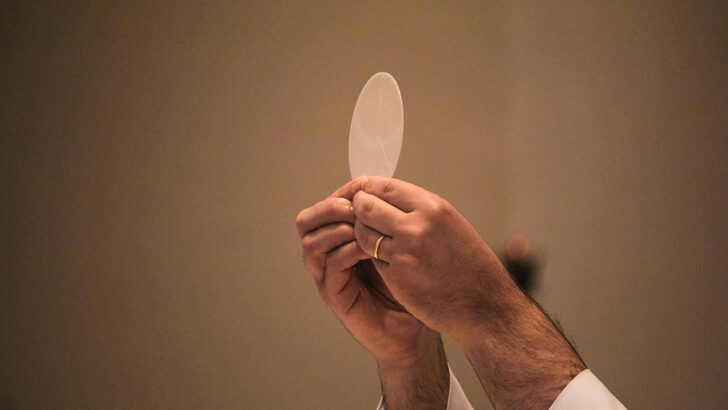Fr Benedict McGlinchey OP
Q: What happens at the consecration?
A: Our understanding of what happens at the consecration of the gifts of bread and wine at Mass is based on Scripture. In passages like Chapter 6 of St John’s Gospel, we see that Jesus shocked His listeners by the realistic way in which He spoke about eating His flesh and drinking His blood. The words of Jesus at the Last Supper, understood within its Passover setting, point to a strong Eucharistic realism. An understanding of the Eucharist as being the body and blood of Christ is affirmed by the Church Fathers, from St Ignatius of Antioch onwards. Writing in the early second century, St Ignatius warns against a group who consciously abstain from the Eucharist. He says that “they do not confess that the Eucharist is the flesh of our Saviour Jesus Christ.” For the early Church Fathers, the teaching that the Eucharist is really the body and blood of Jesus Christ is a continuation of the teaching of the Apostles.
The Fourth Lateran Council (1215) reminds us that while we seek to explain what happens at the consecration as much as possible, we can never exhaust or fully understand the mystery. It remains a mystery of faith. But over time, theologians (particularly St Thomas Aquinas) developed the philosophical and theological tools to describe what happens at the consecration. For Aquinas, Christ is truly, corporeally (that is, in his glorified body) and substantially present on the altar. A substantial presence means that Christ makes Himself wholly and entirely present. Therefore, the Eucharist is not just a reminder or a symbol of Christ, but it is Christ Himself.
It is the consecration of the bread and wine at Mass that brings about this real, substantial presence of Christ in the Eucharist. A validly ordained priest offers recently made unleavened wheat bread and wine made naturally from grapes. He pronounces the words of institution stipulated by the Church (“This is my body”, “This is the chalice of my blood”). The Council of Florence (1439) teaches that at these moments the gifts of bread and wine are respectively converted. The whole substance of the bread is converted into the body of Christ. The whole substance of the wine is converted into the blood of Christ. This is called ‘transubstantiation’. This change is instantaneous and is totally unlike any other change that occurs in the natural world. It is entirely supernatural.
After this has happened, the host and the contents of the chalice have the quality, quantity and other attributes of bread and wine such as taste and smell (what are called ‘the accidents’), but the host is not bread and the contents of the chalice are not wine. This is totally unique in created reality: no other created thing exists in this way. The Council of Trent (1551), affirming Aquinas, taught that the bread and wine have been converted into something entirely different, namely the body and blood of Jesus Christ, though the accidents remain. This is what happens at the consecration. This teaching was confirmed by Pope St Paul VI in 1965 in his encyclical Mysterium Fidei (1965) who was responding to arguments that the consecration results simply in a change of meaning in the Eucharistic gifts.
Although the consecration brings about the change in the gifts, it is important to remember that it finds its proper place only within the liturgical setting of the entire Mass. This gives the consecration its full, sacrificial and ecclesial significance. It is for this reason that Canon Law forbids the consecration to take place outside the Mass.
Fr Benedict McGlinchey OP is Vocations Director for the Irish Dominicans.



